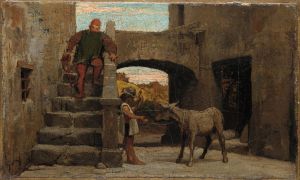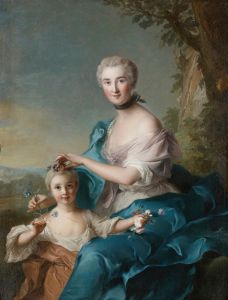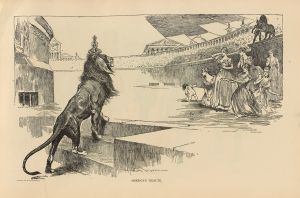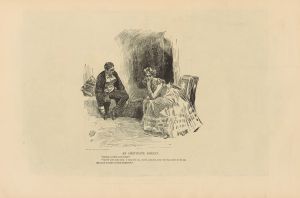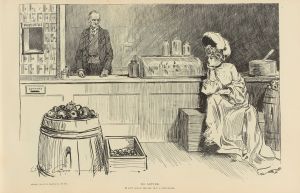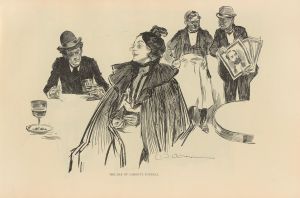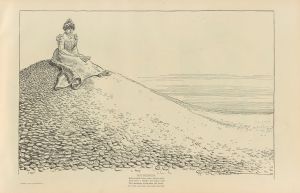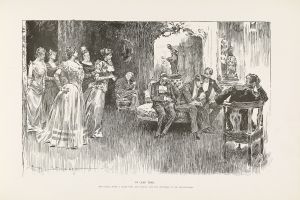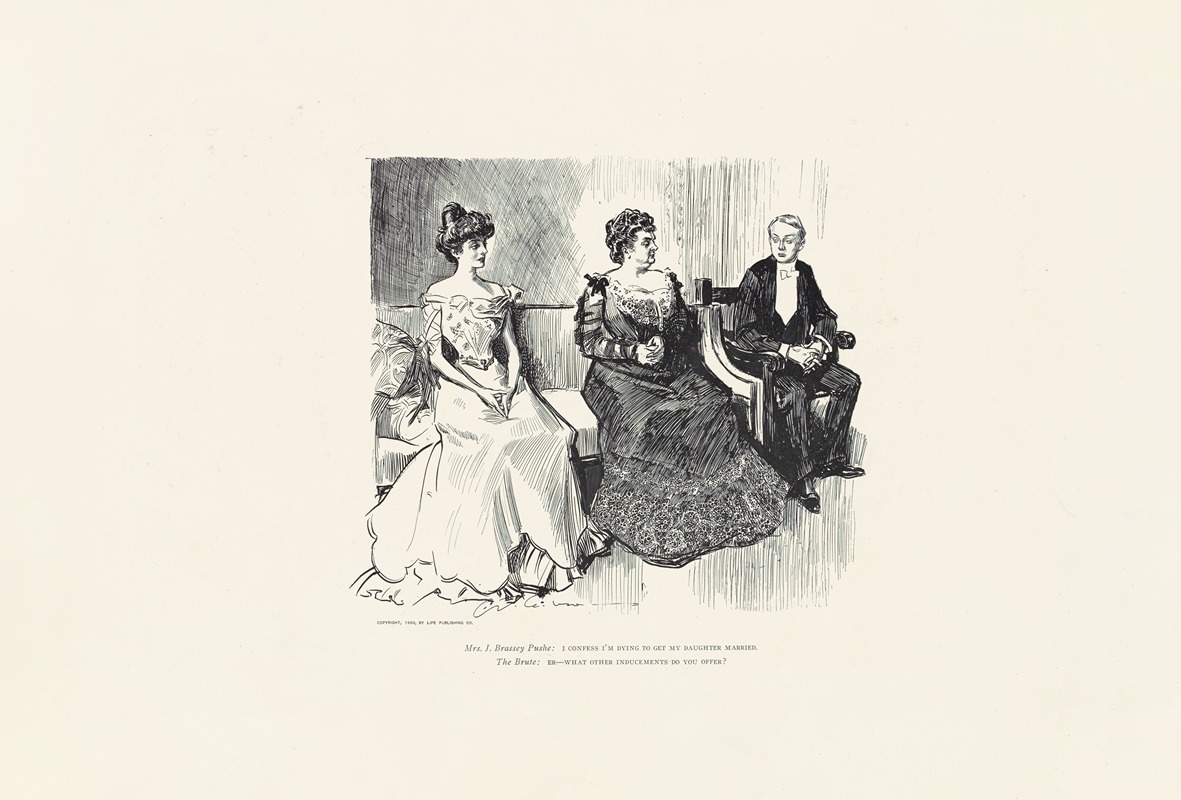
Mrs J. Brassy Pushe; I confess i’m dying to get my daughter married
A hand-painted replica of Charles Dana Gibson’s masterpiece Mrs J. Brassy Pushe; I confess i’m dying to get my daughter married, meticulously crafted by professional artists to capture the true essence of the original. Each piece is created with museum-quality canvas and rare mineral pigments, carefully painted by experienced artists with delicate brushstrokes and rich, layered colors to perfectly recreate the texture of the original artwork. Unlike machine-printed reproductions, this hand-painted version brings the painting to life, infused with the artist’s emotions and skill in every stroke. Whether for personal collection or home decoration, it instantly elevates the artistic atmosphere of any space.
Charles Dana Gibson was an influential American illustrator, best known for creating the iconic "Gibson Girl," a representation of the idealized American woman at the turn of the 20th century. His illustrations were widely published in magazines such as Life, Scribner's, and Harper's, and they played a significant role in shaping American popular culture during that era.
The illustration "Mrs J. Brassy Pushe; I confess I’m dying to get my daughter married" is one of Gibson's works that humorously captures the social dynamics and expectations of the time. This piece is part of a series that often depicted the social elite and their preoccupations, particularly focusing on themes of courtship, marriage, and societal status.
In this illustration, Gibson uses his characteristic style to portray a mother, Mrs. J. Brassy Pushe, who is eager to see her daughter married. The title itself suggests a humorous take on the societal pressures faced by women and their families to secure advantageous marriages. Gibson's work often satirized the social climbing and matchmaking efforts prevalent among the upper classes, and this piece is no exception.
The "Gibson Girl" was characterized by her beauty, independence, and confidence, often depicted as a woman who was both fashionable and assertive. While the specific illustration of Mrs. J. Brassy Pushe does not necessarily feature a "Gibson Girl" in the central role, it reflects the same societal themes that Gibson frequently explored in his work. The mother's desperation to marry off her daughter highlights the societal expectations placed on women to find suitable husbands, a common theme in Gibson's illustrations.
Gibson's illustrations were not only popular for their artistic quality but also for their commentary on contemporary society. His work provided a lens through which the public could view and critique the social norms of the time. The humor and wit in his illustrations made them accessible and engaging, allowing them to resonate with a wide audience.
The impact of Gibson's work extended beyond mere entertainment; it influenced fashion, beauty standards, and even the feminist movement. The "Gibson Girl" became a symbol of the modern woman, embodying both traditional femininity and emerging independence. While "Mrs J. Brassy Pushe" focuses more on the societal pressures of marriage, it still contributes to the broader narrative of women's roles and expectations during the early 20th century.
Overall, Charles Dana Gibson's illustration "Mrs J. Brassy Pushe; I confess I’m dying to get my daughter married" is a reflection of the social commentary that characterized much of his work. Through humor and keen observation, Gibson captured the essence of an era, providing insight into the cultural and social dynamics of his time.





